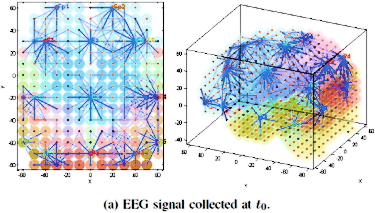Don't wanna be here? Send us removal request.
Text
“Once upon a time, I dreamt I was a butterfly, fluttering hither and thither, to all intents and purposes a butterfly. I was conscious only of my happiness as a butterfly, unaware that I was myself. Soon I awaked, and there I was, veritably myself again. Now I do not know whether I was then a man dreaming I was a butterfly, or whether I am now a butterfly, dreaming I am a man.”
— Zhuangzi
254 notes
·
View notes
Photo



https://www.edge.org/the-last-question
17 notes
·
View notes
Text
Reading: I used to spend my days hallucinating over symbols on dead trees. Today I am as likely to be staring at glowing rectangles and sliding my fingers over metal or glass.
5 notes
·
View notes
Photo
High def illustration/illusion

Art by Angus McKie. From Harry Harrison’s art book ‘Mechanismo’ (1978). It has also appeared in other titles. ‘Attention to Detail’ should be its alternative title 🙌#angusmckie #harryharrison #heavymetal
147 notes
·
View notes
Quote
What I am going to tell you about is what we teach our physics students in the third or fourth year of graduate school… It is my task to convince you not to turn away because you don’t understand it. You see my physics students don’t understand it… That is because I don’t understand it. Nobody does.
Richard Feynman, QED: The Strange Theory of Light and Matter (via inthenoosphere)
472 notes
·
View notes
Quote
While Borges wagered that the map might wither away, Baudrillard speculated that on the contrary, reality was disintegrating. In fact, both proliferate and confuse one another: on handheld devices, at checkpoints, and in between edits. Map and territory reach into one another to realize strokes on trackpads as theme parks or apartheid architecture. Image layers get stuck as geological strata while SWAT teams patrol Amazon shopping carts. The point is that no one can deal with this. This extensive and exhausting mess needs to be edited down in real time: filtered, scanned, sorted, and selected—into so many Wikipedia versions, into layered, libidinal, logistical, lopsided geographies. This assigns a new role to image production, and in consequence also to people who deal with it. Image workers now deal directly in a world made of images, and can do so much faster than previously possible. But production has also become mixed up with circulation to the point of being indistinguishable. The factory/studio/tumblr blur with online shopping, oligarch collections, realty branding, and surveillance architecture. Today’s workplace could turn out to be a rogue algorithm commandeering your hard drive, eyeballs, and dreams. And tomorrow you might have to disco all the way to insanity.
Hito Steyerl: Too Much World. Is the Internet Dead? (via theimpossibleheap)
227 notes
·
View notes
Text
Quantum weirdness: What we call 'reality' is just a state of mind
A lifetime studying quantum mechanics has convinced Bernard d'Espagnat that the world we perceive is merely a shadow of the ultimate reality
(by Bernard d’Espagnat, for The Guardian https://www.theguardian.com/science/blog/2009/mar/17/templeton-quantum-entanglement)
I believe that some of our most engrained notions about space and causality should be reconsidered. Anyone who takes quantum mechanics seriously will have reached the same conclusion.
What quantum mechanics tells us, I believe, is surprising to say the least. It tells us that the basic components of objects – the particles, electrons, quarks etc. – cannot be thought of as “self-existent”. The reality that they, and hence all objects, are components of is merely “empirical reality”.
This reality is something that, while not a purely mind-made construct as radical idealism would have it, can be but the picture our mind forces us to form of … Of what ? The only answer I am able to provide is that underlying this empirical reality is a mysterious, non-conceptualisable “ultimate reality”, not embedded in space and (presumably) not in time either.
How did I arrive at this conclusion? My interest in the foundations of quantum physics developed at quite an early stage in my career, but I soon noticed that my elders deliberately brushed aside the problems the theory raised, which they considered not to be part of physics proper. It was only after I attained the status of a fully-fledged physicist that I ventured to take up the question personally.
To put it in a nutshell, in this quest I first found that whatever way you look at it the quantum mechanical formalism, when taken at face value, compels us to consider that two particles that have once interacted always remain bound in a very strange, hardly understandable way even when they are far apart, the connection being independent of distance.
Even though this connection-at-a-distance does not permit us to transmit messages, clearly it is real. In other words space, so essential in classical physics, seems to play a considerably less basic role in quantum physics.
I soon found out, as often happens, that these things had been known for quite a long time. Schrödinger had even given them a name: entanglement, and had claimed entanglement is essential. But strangely enough he had not really been listened to. Indeed he had been unheard to the extent that the very notion of “entanglement” was hardly mentioned in regular courses on quantum physics.
And in fact most physicists felt inclined to consider that, if not entanglement in general, at least the highly puzzling ‘entanglement at a distance’ was merely an oddity of the formalism, free of physical consequences and doomed to be removed sooner or later, just through improvements on the said formalism. At the time the general view was therefore that if any problems remained in that realm these problems were of a philosophical, not of a physical nature so that physicists had better keep aloof from them.
I was not convinced I must say, and in the early sixties I wrote and published a book and some articles developing physical arguments that focused attention on such problems by showing that entanglement is truly something worth the physicist’s attention.
And then a real breakthrough took place in that John Bell, a colleague of mine at Cern, published his famous inequalities, which - for the first time - opened a possibility of testing whether or not entanglement-at-a-distance had experimentally testable consequences.
The outcome confirmed my anticipations. Entanglement-at-a-distance does physically exist, in the sense that it has physically verifiable (and verified) consequences. Which proves beyond a shadow of a doubt that some of our most engrained notions about space and causality should be reconsidered.
Bernard d'Espagnat is a theoretical physicist, philosopher and winner of the Templeton Prize 2009. He is the author of On Physics and Philosophy, Princeton University Press, 2006
260 notes
·
View notes
Quote
It is important to realize that in physics today, we have no knowledge of what energy is. We do not have a picture that energy comes in little blobs of a definite amount. It is not that way. However, there are formulas for calculating some numerical quantity… It is an abstract thing in that it does not tell us the mechanism or the reasons for the various formulas.
Richard Feynman, Lectures on Physics, 1963 (via inthenoosphere)
144 notes
·
View notes
Quote
Indeed, the line between perceiving and hallucinating is not as crisp as we like to think. In a sense, when we look at the world, we are hallucinating all the time. One could almost regard perception as the act of choosing the one hallucination that best fits the incoming data, which is often fragmentary and fleeting.
V.S. Ramachandran (via inthenoosphere)
1K notes
·
View notes
Quote
Producing inner images is a natural process common to everyone. It is part of thinking. Associative, wild, free, ordered and systematic thinking in images, in architectural, spatial, colorful and sensuous pictures – this is my favorite definition of design.
Peter Zumthor (via inthenoosphere)
104 notes
·
View notes
Quote
The square, rectangle, cruciform, pinwheel, linked figure and lozenge are six of the more basic figures concerned with man’s orthogonal preconceptions. Each, in its own way, while finite unto itself is linked with the others. The first five represent rectilinear notions while the sixth, the lozenge, introduces the diagonal phenomena.
Stanley Tigerman, The Formal Generators of Structure (via inthenoosphere)
25 notes
·
View notes
Quote
We never see the world as our retina sees it. In fact, it would be a pretty horrible sight: a highly distorted set of light and dark pixels, blown up toward the center of the retina, masked by blood vessels, with a massive hole at the location of the “blind spot” where cables leave for the brain; the image would constantly blur and change as our gaze moved around. What we see, instead, is a three-dimensional scene, corrected for retinal defects, mended at the blind spot, stabilized for our eye and head movements, and massively reinterpreted based on our previous experience of similar visual scenes. All these operations unfold unconsciously—although many of them are so complicated that they resist computer modeling. For instance, our visual system detects the presence of shadows in the image and removes them. At a glance, our brain unconsciously infers the sources of lights and deduces the shape, opacity, reflectance, and luminance of the objects.
Stanislas Dehaene, Consciousness and the Brain: Deciphering How the Brain Codes Our Thoughts (via inthenoosphere)
582 notes
·
View notes
Quote
Art must take reality by surprise.
Françoise Sagan (via inthenoosphere)
55 notes
·
View notes
Quote
Globalism has produced an unprecedented concentration of socially and ecologically unbearable wealth, an oligarchy beyond anyone’s control. It is too corrupt to govern, too unjust to bear and too powerful to stop without a detailed, sweeping and widely comprehensible project, capable of swaying millions of hearts for more than twenty-four hours, and for more than twenty-four years. No one will create such a project by simply vibrating on the wavelengths of the present. We are entering the kind of era that gives birth to great philosophies and messianic religions. The secret societies of today do not conspire, they don’t use encryption, they don’t plan spectacular campaigns or media coups. They meet steadily and publicly to express emotions, exchange ideas, map systemic trends and constitute world pictures. They learn resilience, renewal, and above all, the capacity to recognise the efforts of similar groups without necessarily coming to immediate agreement. A different kind of self can only emerge from resistance to the psychic tsunami of continuous crisis. Disconnecting from the neoliberal neural net does not mean ignoring emergent facts, earth-shaking events or split-second changes. It means re-attuning bodies and minds to the deep time of necessary and inevitable transformations in the earth system.
Brian Holmes
(via jacobwren)
28 notes
·
View notes
Photo





Plastic Girls
Short film by Nils Clauss explores the spaces that use female-form robotic mannequins around South Korea to attract business:
vimeo
With slow graceful movements and digitally generated messages, Plastic Girls make a conspicuous contribution to the sexualisation of public space in front of their owners premises.
PLASTIC GIRLS is the last film of a Korea related trilogy following BIKINI WORDS and LAST LETTERS:
vimeo.com/151000182 vimeo.com/195284427
Link
312 notes
·
View notes

